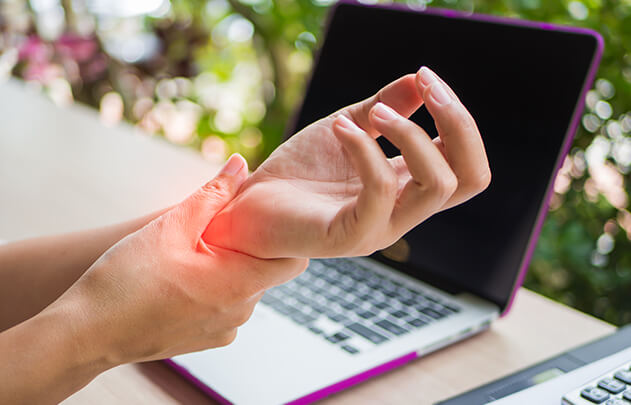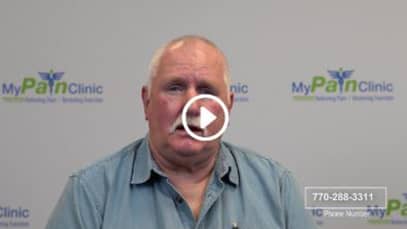About Carpal tunnel syndrome:
Carpal tunnel syndrome is a painful condition that occurs when the tissues adjoining the flexor tendons swell and the tunnel is narrowed down which ultimately puts pressure on the median-nerve. These adjoining tissues are called “synovium”. Ordinarily, the synovium acts as a lubricant for the tendons and makes it easier for the fingers to move and rotate.
When there is swelling in the synovium, the nerves starts getting crowded over time taking up the space in the carpal tunnel which ultimately results in building abnormal pressure on the subject nerve and cause pain, tingling, numbness, and weakness in the movement of the hand.

According to widespread researches and medical studies, women and older people have more tendencies to develop this carpal tunnel syndrome. Mostly a combination of factors is responsible for triggering and developing this syndrome in women and elderly people.
Symptoms of carpal tunnel syndrome:
- Numbness and weakness in the hand difficult for performing hand movements involved in buttoning clothes etc.
- Tingling or pain traveling across the forearm heading toward the shoulder
- Burning
- Pain mostly in the thumb and index, middle, and ring fingers
- developing shock-like sensations radiating through the thumb and index, middle, and ring fingers
- un intentional dropping of objects due to numbness, weakness or a loss of “proprioception” (awareness of where your hand is in space)
Risk factors for carpal tunnel syndrome:
- Health conditions covering diseases like thyroid gland, rheumatoid arthritis, and Diabetes
- The position of wrist and hand while doing activities like extreme flexing or extension for a longer time period causes abnormal pressure on hand
- The carpal tunnel is a naïve syndrome found lesser in population and relate to heredity involving traits that run in families
- Hormonal imbalances during pregnancy
Diagnosis of Carpal Tunnel Syndrome at My Pain Clinic:
During patient’s evaluation, the doctors at My Pain Clinic will talk to the patient about their general health conditions as well as their previous medical history and will ask about their symptoms in detail.
Examination by the Doctors:
Our doctors spend reasonable time in carefully examining the patient’s hand and wrist followed by performing a number of physical tests as well. During these tests, they will physically examine the patient’s hand by asking them to press down or tap along the median nerve present at the inner side of the wrist to check the presence of numbness or tingling in fingers. They will also check the tingling and numbness of your hands and fingers by bending and flexing your hand. The doctors will also test the sensitivity in your fingertips and hands by touching them lightly with specialized instruments whilst your eyes are closed. The muscles surrounding the base of your thumb are also tested for presence of weakness or numbness.

After this series of tests our doctors will start looking for atrophy in the muscles present around the base of affected patient’s thumb. These muscles tend to become really smaller in most severe cases. Doctors will also conduct a test of nerve damage which is called Tinel’s Test. Electrophysiological tests shall also be performed to check the absolute working of the median nerve and measure the pressure sustained by it. Electromyogram (EMG) test is another type of test entitled to being performed with a “nerve conduction study” which is really helpful for the doctors in guiding them towards the right nerve treatment.
Electromyogram (EMG), Ultrasound, MRI and X-rays can also be performed in order to know the severity of the problem, getting hands in to the affected nerve and taking it towards proper and complete treatment.
Nonsurgical Treatment
In the start of the disease, the non-surgical treatments can retrieve the nerve and get effective results such as:
- Wrist brace on the affected area where nerve damage is susceptible
- Bracing or splinting shall help keeping the hand and wrist in the right position and getting it in the neutral position that will put less stress on the affected nerve area.
- Nonsteroidal anti-inflammatory drugs (NSAIDs) which include oral medications as ibuprofen and naproxen can help relieve pain, swelling and inflammation
- Steroidal injections
- Changing the job activities to put less stress on the hand and wrist for better recovery
- Physiotherapy
Treatment of Carpal Tunnel Syndrome:
Although it is a gradual process, but for many people carpal tunnel syndrome will get more worse over time without getting its correct and complete treatment. that’s why this should be handled with care and attention and proper diagnosis at the right time to avoid any further damage.








